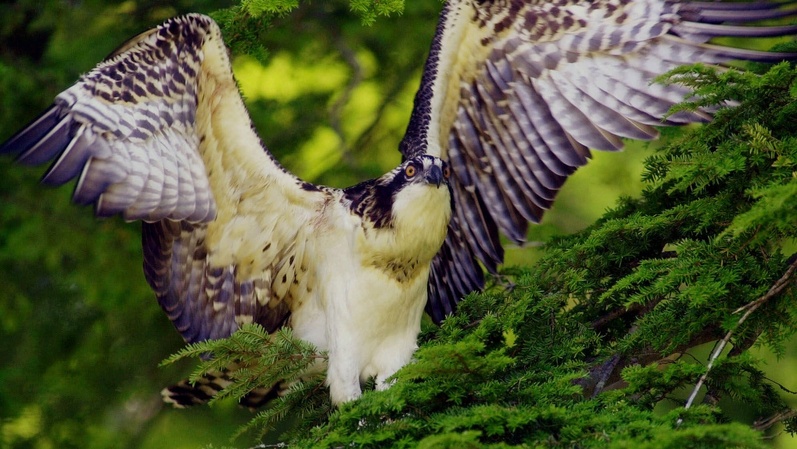The 51st supplement to the American Ornithologists’ Union Checklist of North American Birds has just been published in the ornithological journal, the Auk.
It is the standard guide to common and scientific names of the birds of North America.
The committee reviews the published literature and decides if species should be split, lumped or renamed. The consideration of DNA evidence and morphological evidence may result in changes in the higher taxonomy (such as the family level) of birds.
This supplement is the tenth one since the publication of the most recent list in 1998 and is based on committee deliberations between January 2009 and March 2010.
Many of the changes involve tropical species or other species found well outside of Maine. In this column, I will restrict myself to birds that occur in Maine, at least as passage migrants. I will consider birds in the standardized check-list order. You may wish to enter corrections into your field guide.
First, the common name of the greater shearwater is changed to great shearwater.
The order Pelecaniformes formerly contained the pelicans, cormorants, gannets and boobies, and the tropicbirds. All of these birds have totipalmate feet; webbing is found between all four toes. All other birds with webbed feet only have webs between three toes. The hind toe has no webbing.
However, DNA analysis indicates the tropicbirds are not closely related to other members of the pelecaniforms. Therefore, a new order, the Phaethontiformes, has been erected for the tropicbirds, including the red-billed tropicbird that has been seen around Seal Island the past few years during the summer.
Even with the tropicbirds removed from the pelecaniforms, DNA evidence indicates that the remaining families are a hodge-podge of distantly related groups of birds.
In fact, the herons, spoonbills and ibises are very closely related to some families of pelecaniforms. So now the herons (family Ardeidae) and spoonbills and ibises (family Threskiornithidae) are moved from the order Ciconiiformes into the order Pelecaniformes. Now, the order Ciconiformes contains only the storks (family Ciconiidae).
We’re not done with the pelecaniforms yet. The cormorants and frigatebirds are moved from the order Pelecaniformes to a new order, the Suliformes.
The species we have been calling black scoter occurs on both sides of the Atlantic. However, differences in courtship behavior and feathering of the bill indicate the European and American forms are different species. Now, black scoters in North America are renamed American scoters (Melanitta americana). The European birds are still referred to as black scoters (Melanitta nigra).
DNA comparisons show that the hawks and falcons, formerly united in the order Falconiformes, are not closely related. Now the order Falconiformes includes only the falcons (family Falconidae).
A new order, the Accipitriformes, is erected to contain the New World vultures (family Cathartidae), hawks, kites and eagles (family Accipitridae) and the osprey, now placed in its own family, the Pandionidae.
Whip-poor-wills occur in eastern North America as well as Arizona. The Arizona forms have been split off as a new species, the Mexican whip-poor-will. Our species is now called the Eastern whip-poor-will.
Our winter wren, Troglodytes troglodytes, nests in coniferous forests throughout northern North America. This bird also occurs in Europe, the only wren in the Old World.
Research indicates there are actually three species in what we called winter wren. Two new species are recognized in North America. The winter wren occurs in Maine but is now classified as Troglodytes hiemalis. The wrens that occur in the west are classified as a new species, the Pacific wren (Troglodytes pacificus).
If you have seen winter wrens in the Far West, you have just picked up a life bird!
The gnatcatchers are now placed in their own family, the Polioptilidae.
The scientific name of the blue-winged warbler is changed from Vermivora pinus to Vermivora cyanoptera.
The Tennessee warbler, the Nashville warbler and the orange-crowned warbler are all moved from the genus Vermivora to the genus Oreothlypis.
The northern waterthrush and the Louisiana waterthrush are moved from the genus Seiurus to the genus Parkesia.
Analysis of the DNA of larkspurs and snow buntings has revealed that they are not very closely related to the sparrow family, the Emberizidae, in which they were formerly classified. A new family, the Calcariidae, is established for these birds.
Regularly occurring members of this new family in Maine are Lapland longspurs and snow buntings.
If you would like to see the full report of the Check-list Committee, the article appears in the July 2010 issue of the Auk, Volume 127, pages 726-744.
Herb Wilson teaches ornithology and other biology courses at Colby College. He welcomes reader comments and questions at whwilson@colby.edu.
Send questions/comments to the editors.



Success. Please wait for the page to reload. If the page does not reload within 5 seconds, please refresh the page.
Enter your email and password to access comments.
Hi, to comment on stories you must . This profile is in addition to your subscription and website login.
Already have a commenting profile? .
Invalid username/password.
Please check your email to confirm and complete your registration.
Only subscribers are eligible to post comments. Please subscribe or login first for digital access. Here’s why.
Use the form below to reset your password. When you've submitted your account email, we will send an email with a reset code.